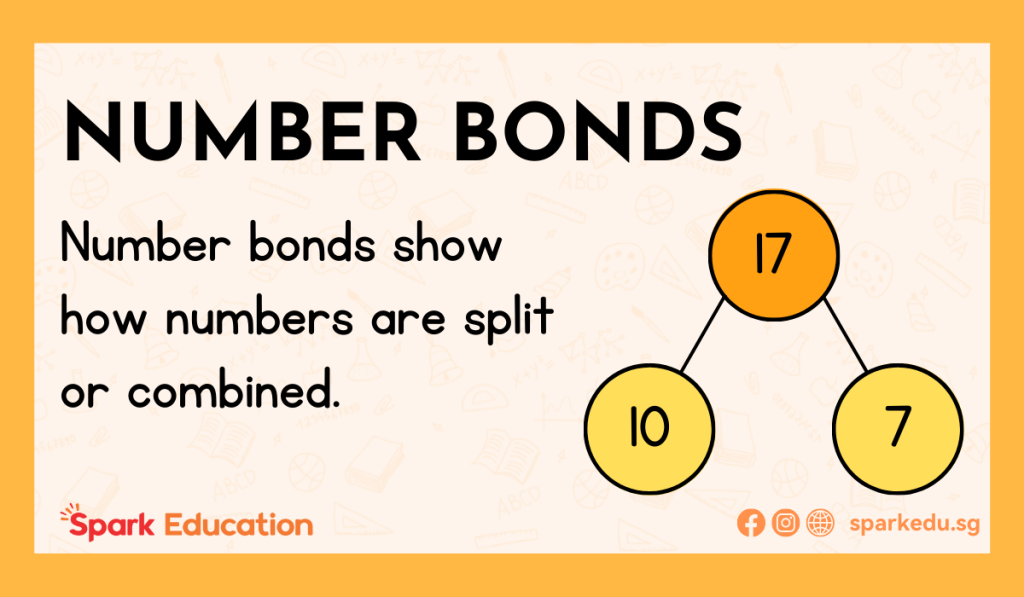
Want to give your child a head start in math? Number bonds are the secret key! This simple concept is a powerful tool for building a strong foundation in arithmetic. By understanding how numbers break down and combine, children develop essential number sense, mental math skills, and problem-solving abilities. Let’s explore how number bonds can transform your child’s math journey.
What are number bonds?
Number bonds show how numbers are broken down or combined. It’s a key method in Singapore Math for understanding how numbers relate in parts and wholes.
In early numeracy, number bonds help kids build essential number sense as they move to addition and subtraction. As they advance, number bonds become a fundamental mental strategy for problem-solving.
Every child should master these four types of number bonds:
- Addition Number Bonds
- Subtraction Number Bonds
- Multiplication Number Bonds
- Division Number Bonds
For more details on each type and why they matter at different learning stages, keep reading.
How do number bonds work?
Number bonds are represented by circles connected by lines or arrows. The ‘whole’ number is placed in the first circle, while the connected circles show the ‘parts’.
These part-part-whole structures help kids see how a larger number (whole) can be made from smaller numbers (parts). For example, 5 can be made with 2 and 3.
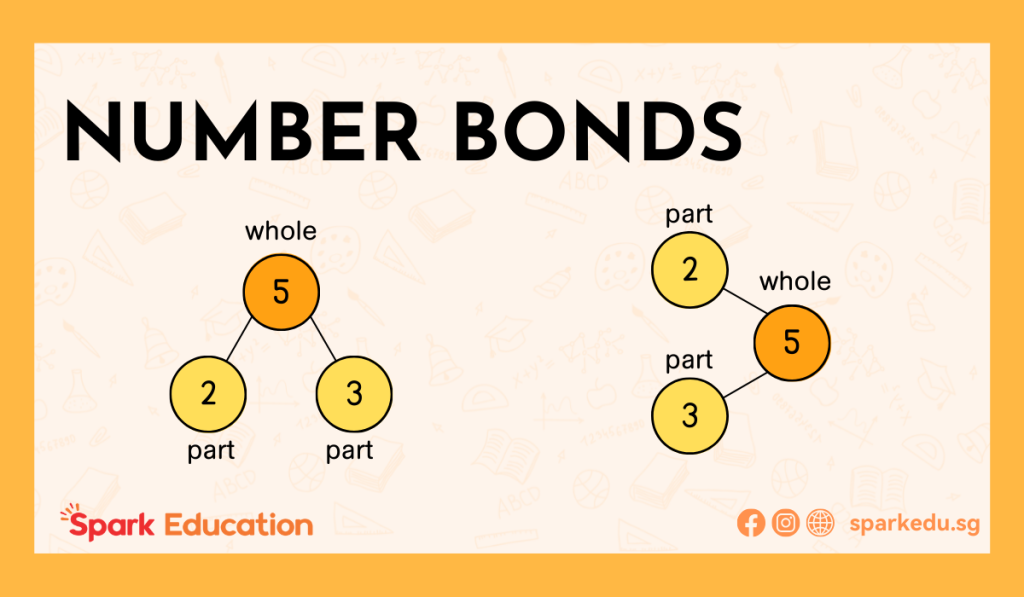
Similar to how mind maps help with writing, number bonds provide a clear structure for showing how numbers break down into combinations of smaller parts.
Benefits of Number Bonds
Number bonds play a critical role in early and elementary mathematics education.
- Visualize math: Number bonds makes it easier for children to understand how numbers break down and combine in addition, subtraction, multiplication, and division.
- Enhance number sense: By exploring different combinations of numbers, children develop a deeper understanding of number relationships and patterns.
- Improved mental math: Regular practice with number bonds strengthens mental calculation skills, making it easier for children to solve problems quickly and accurately.
- Stronger problem-solving abilities: Number bonds encourage flexible thinking and the ability to break down complex problems into smaller, manageable steps.
Kindergarten Number Bonds
In Kindergarten, children explore numbers up to 10 using manipulatives and visual models where they compose and decompose numbers using manipulatives.
Number bonds diagrams show how numbers form parts of a whole. For example, 3 and 2 make 5.
They also show that a whole number can be made of parts in varying proportions, such as 1 + 4, 2 +3, or even 5 + 0.
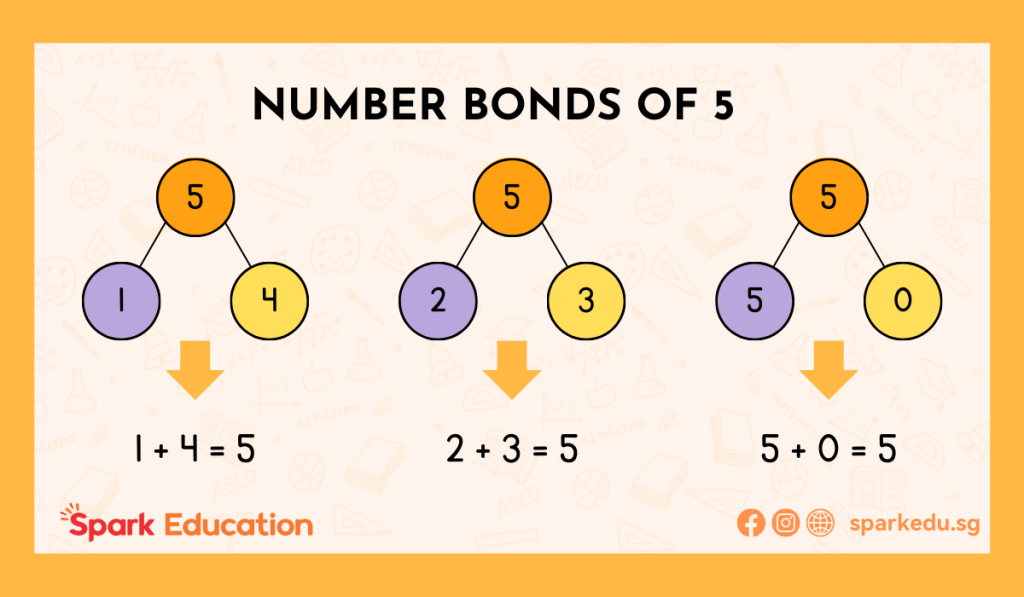
Number Bonds and Algebraic Thinking
Addition
Grade 1 math introduces making tens and understanding place value. Students learn to break numbers into groups of ten and additional units.
Number bonds are handy for breaking numbers down into smaller parts to simplify addition..
For example, for 7 + 5:
- Break down 7 into 2 and 5.
- Combine 5 + 5 to get 10.
- Add the remaining 2 to the sum of 10.
- Therefore, 7 + 5 equals 12.
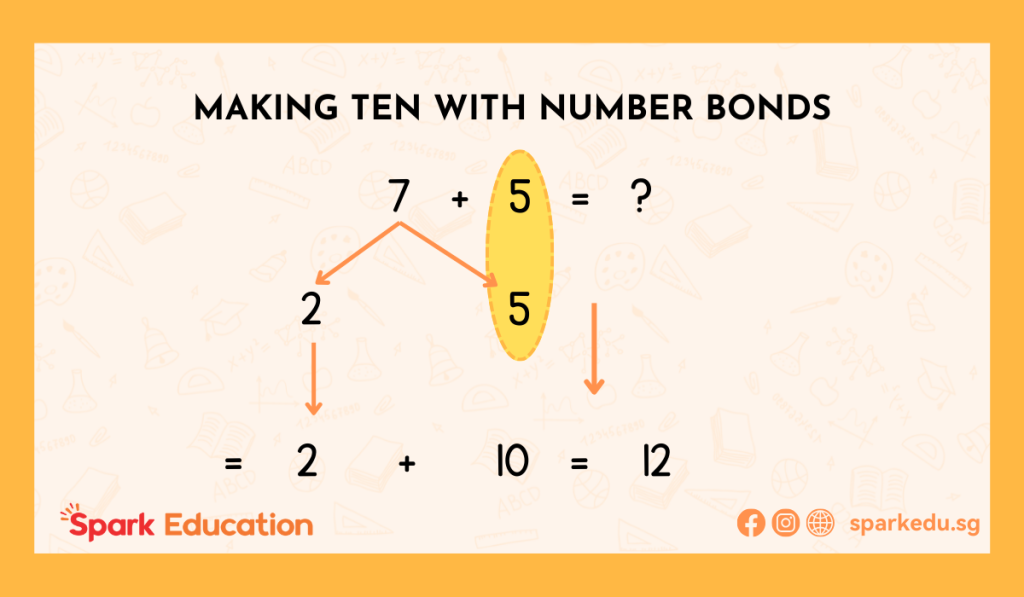
Number bonds are particularly helpful when adding multiple numbers. By grouping numbers that add up to 10, calculations become quicker.
For example, in the sum 2 + 3 + 6 + 4 + 8 + 7, we can pair numbers that add up to 10: 2 + 8, 3 + 7, and 6 + 4. Adding these pairs together gives us 10 + 10 + 10 = 30.
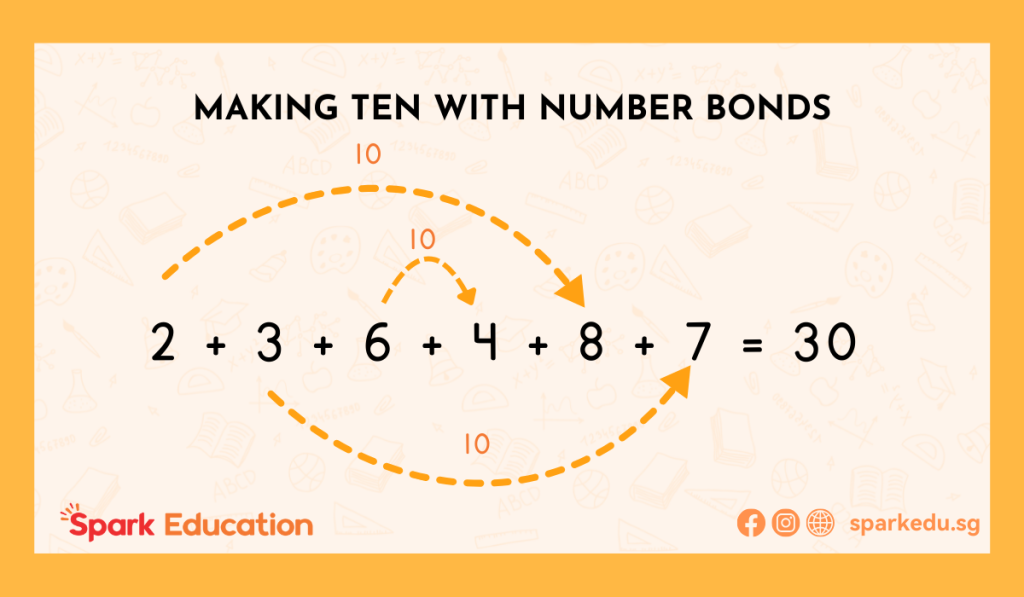
Subtraction
As students progress to concepts like making hundreds and place value up to 1,000, number bonds strengthen their addition and subtraction skills.
They learn the inverse relationships between addition and subtraction. For instance, knowing a number bond allows them to create 2 addition and 2 subtraction sentences, like in the example below:
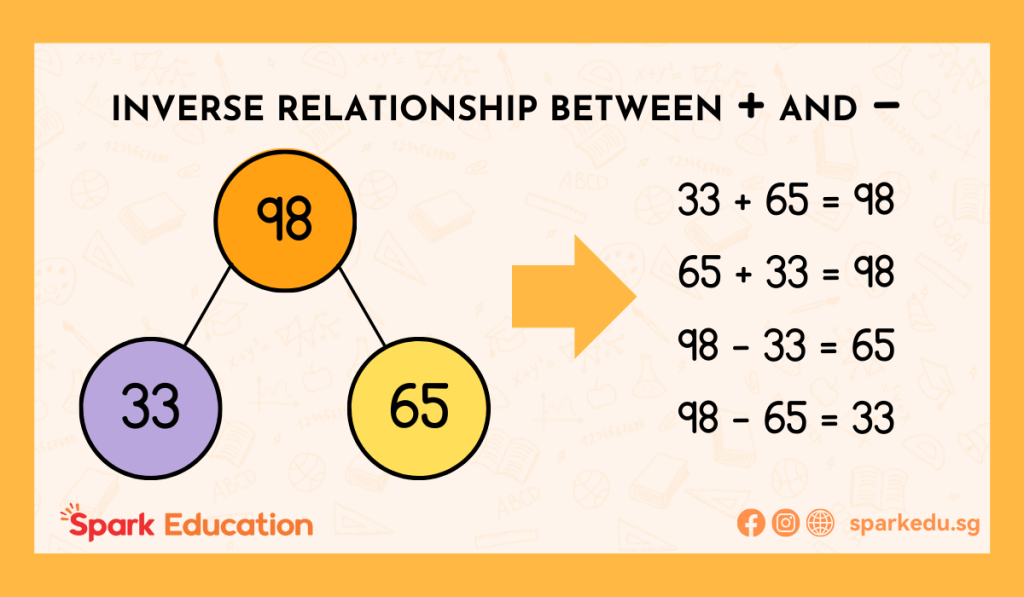
By using number bonds, students develop mental strategies for both addition and subtraction. They can quickly visualize how numbers can be split or combined, making mental calculations more efficient.
Multiplication and Division
Similarly, number bonds help students see multiplication and division as inverse operations. They help students solve problems and remember division facts more easily.
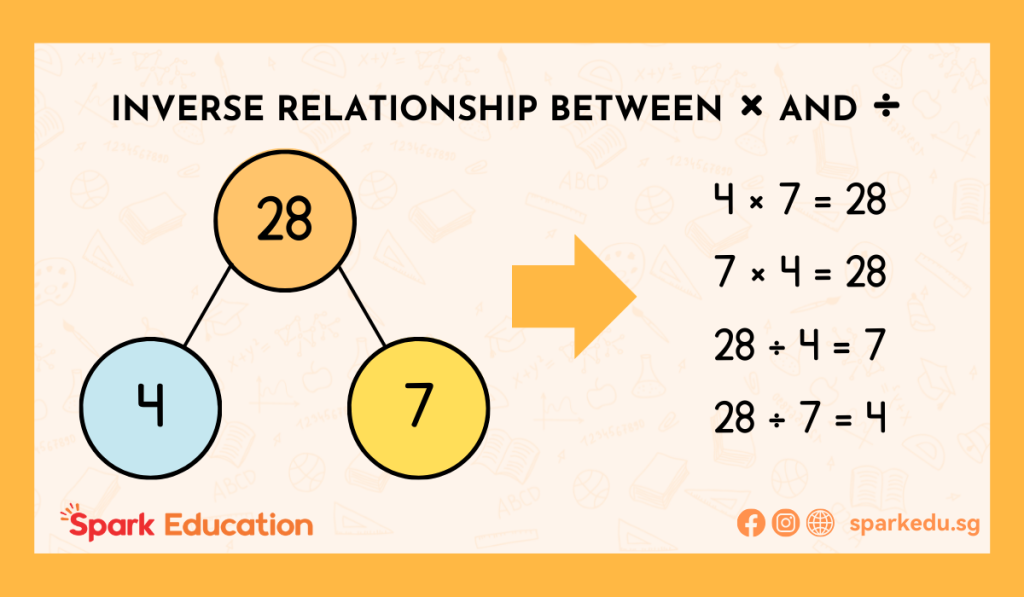
Number bonds show how numbers can be multiplied using the distributive property. This means breaking down multi-digit multiplication into smaller, easier steps using number bonds.
For example, students can break down larger multiplication problems into smaller parts using number bonds. This helps them solve problems more efficiently and understand how multiplication works.
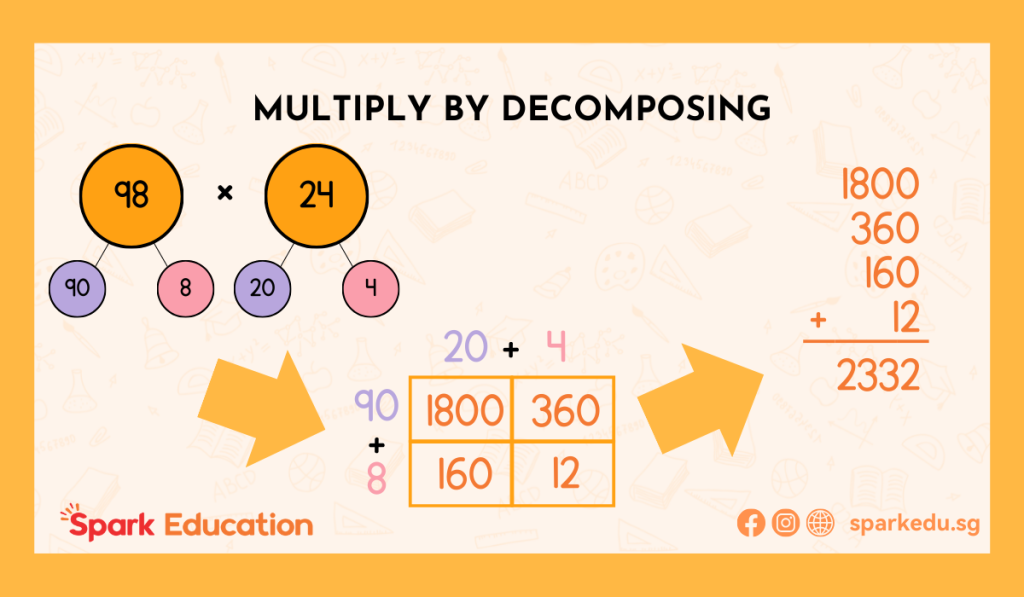
Fraction
Number bonds are invaluable when working with fractions, which can be tricky for many students. Sometimes, students misunderstand the idea of “the” whole versus “a” whole.
To clear up this confusion, it’s important to explain that “a” whole can also mean just one whole unit, not necessarily the entire amount. Number bonds help with this by showing how a whole can be broken down into its parts, especially when dealing with fractions.
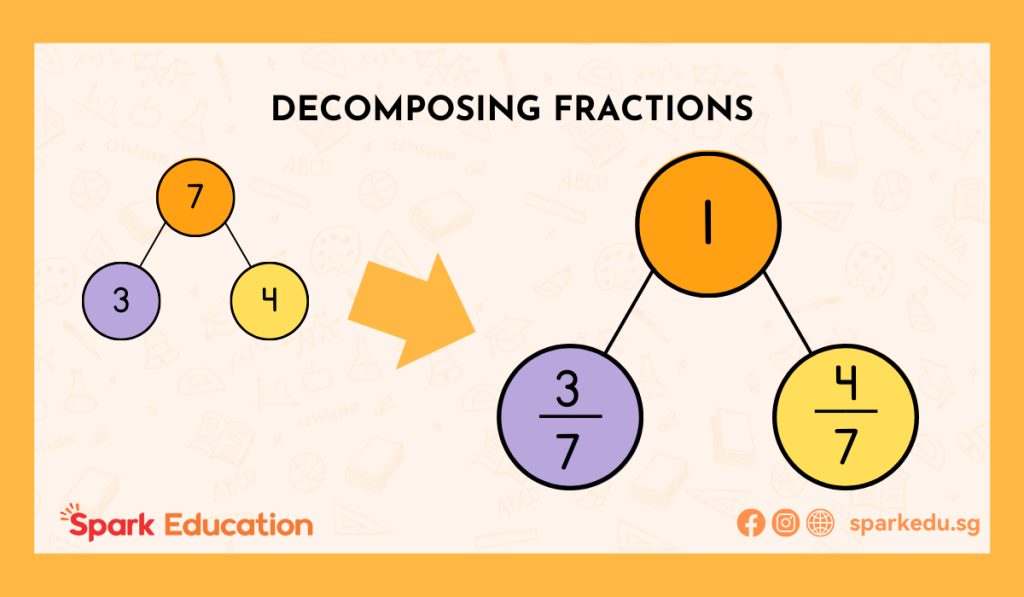
Teachers can use number bonds to show how a whole can be split into fractions. This helps students understand fractions better and also how to work with mixed numbers in math problems.
Conclusion
A number bond visually breaks down a number into smaller parts. It readies children to learn basic arithmetic such as addition, subtraction, and division, as well as more advanced math later on.
Teaching number bonds effectively often involves using the Concrete-Pictorial-Abstract (CPA) approach. This method uses hands-on activities, visual models, and abstract symbols to help children understand the concept deeply.
Ready to get your child ready for math excellence? Sign up for a Free Trial Class with Spark Math by Spark Education. Our expert teachers will guide your child through the CPA approach and interactive courseware, building a solid foundation for future math success.




